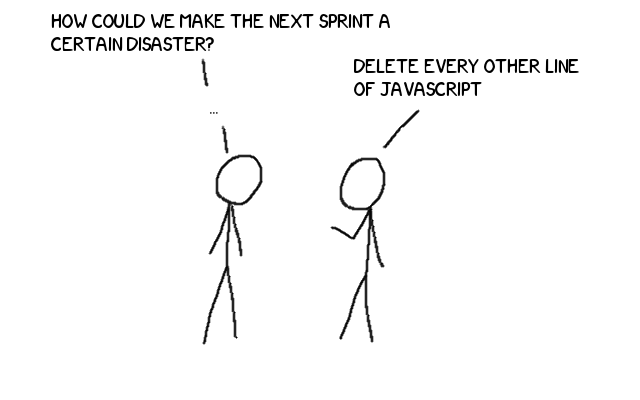The Path to Agility Part 10: Another Retro
Continuing the theme of real retrospective examples, this post is another example of a real retrospective. These posts lag somewhat behind my team’s actual work, so please forgive me if I appear to have failed to learn any lessons highlighted in the last post!
Setting the stage
I opened this retrospective by listing the stories we completed (and those we didn’t), showed the burndown, and our velocity over the last few sprints. I also summarised the actions we’d decided on in the last few retrospectives.
As with the previous retrospective I was trying to refresh the team’s memory about the last sprint, and trying to set an implicit focus on the team’s velocity (the recent trend had been in the wrong direction, and I wanted to see if there was anything underlying that).
As before, I found that the opening was not very engaging - and therefore I suspect that it didn’t serve to refresh the team’s memory as well as it could have done.
I again used plans-for-retrospectives.com to generate some activities, then tweaked them so that I could get a clean flow throughout the retrospective. This time I used an activity called “Last Retro’s Actions Table” to set the stage. I’d noticed a tendency to creation actions without following through, and I wanted to help focus the retrospective back on what we’d previously decided.
I wrote down our previous commitments, and added columns labelled ‘More of’, ‘Keep doing’, ‘Less of’ and ‘Stop doing’. I got everyone to vote on which column they felt each action belonged in. For almost all the actions the consensus was wither “keep doing” or “more of”, so I went through the list and tried to get the team to suggest ways we could follow through on the actions we weren’t doing. When we felt that an action had become “part of our day-to-day” we removed it from the board.
Overall this was a pretty useful activity, and I can easily imagine building a retrospective where this was part of the “gather data” phase.
Gather data
For gathering data I used “Analyze Stories”. Writing this up several weeks after we did the retrospective I remember nothing about this activity…which probably means it wasn’t very useful. In essence, I went through each story and asked the team how they felt it went and how it could have gone better. This is a bit like the “three questions” I have discussed in the past, but helps to focus the team on the actual work.
Generate insights
I used an activity called “the worst we could do” to generate insights. The idea of this activity is to ask the team for ways we could make the next sprint a certain disaster. I picked it because it sounded fun, which may not be the best reason - but helps to liven up the retrospective at a time when it might be starting to lose energy.
Having gathered the team’s answers, I then flipped all the ideas around and looked to see what we were doing to prevent them from happening.
So…this activity…firstly, you need to think very carefully how you set this up - I just threw it out there and waited, but the team was (understandably) confused about what I was looking for. After all, “we just don’t come in to work” pretty much guarantees the sprint will fail, but doesn’t really help us find ways to improve. If I use this activity again I will have to think more carefully about how I focus the activity and the boundaries I set on answers.
On the plus side, once I started to get answers they were fairly easy to flip around and look at what we’re doing to prevent them (for example, “delete every other line of Javascript” was a suggestion, which is easily prevented with our code review and automated regression testing).

Decide what to do
Err…yeah…looking back at my notes I somehow didn’t really do this. I was trying to keep the retrospective on time, and some of the earlier activities did generate actions (in particular the very early focus on our outstanding actions).
Close the retrospective
I closed the retrospective with the same activity again - asking everyone for
- One thing that pleased or surprised them this retrospective
- One person they would like to acknowledge for something they did this iteration.
This was less helpful than the previous retrospective, but I still got the very interesting feedback that looking over our previous actions was a useful activity.